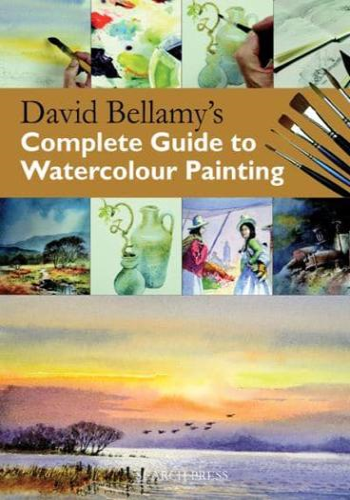Chapter 1: Materials and Equipment
In the first chapter of David Bellamy’s Complete Guide to Watercolour Painting, the author begins by introducing the necessary materials and equipment for watercolour painting. This includes various types of watercolour paints, brushes, paper, and other tools like palettes and easels.
As an example, Bellamy demonstrates the different effects that can be achieved with different types of watercolour paints. He compares the transparency and vibrancy of tube paints versus pan paints, and explains how the consistency of the paint can affect the final result.
Bellamy then goes on to discuss the importance of choosing the right paper for watercolour painting. He mentions the different weights and textures available, and recommends using a heavier weight paper for better absorption and less warping.
In addition to these essential materials, Bellamy also introduces other tools that can enhance your watercolour painting. He suggests investing in a good quality brush, specifically a round or pointed one for creating fine details, and a larger flat brush for covering bigger areas.
To put the information from this chapter into practice, a beginner watercolour artist might start by experimenting with different paints and papers to see which they prefer. They could also try creating a painting using only a round brush and then another using only a flat brush to see how the results differ.
Chapter 2: Colour and Pigments
In chapter two, Bellamy focuses on the properties and use of colour in watercolour painting. He explains the importance of understanding colour theory, and how to create harmonious and balanced colour schemes in a painting.
Using real examples, Bellamy shows readers how to mix colours using primary pigments to create secondary and tertiary colours. He also provides helpful tips on how to get the most out of your watercolour paints, such as using a wet brush to pick up dry pigment or layering different colours to create depth and texture.
To further illustrate these concepts, Bellamy includes step-by-step demonstrations of colour mixing and application in his own paintings. For instance, he shares a painting of a landscape where he uses a limited palette of three colours to create a beautifully balanced and realistic scene.
For someone reading this chapter, they could put these ideas into practice by trying to create their own colour wheel using only the primary pigments they have, or following Bellamy’s step-by-step demonstration to recreate one of his paintings and observe the effects of various colour combinations.
Chapter 3: Composition and Perspective
In this chapter, Bellamy delves into the principles of composition and perspective in watercolour painting. He explains how to create a strong focal point, balance elements in a painting, and use perspective to create depth and a sense of space.
To help readers understand these concepts, Bellamy includes images of his own paintings and discusses the composition choices he made. He emphasizes the importance of having a clear plan and vision for a painting before starting, and shares his own process for planning and sketching a composition.
As an example, Bellamy shows a painting of a village in the countryside and talks through his decisions for creating a strong composition. He explains how he used a winding road and a few focal points to lead the viewer’s eye through the painting and create a sense of depth and space.
A reader might put this chapter’s teachings into action by trying to replicate Bellamy’s painting of the village, or by practicing sketching different compositions and experimenting with different focal points and perspectives.
Chapter 4: Starting to Paint
In this chapter, Bellamy discusses the various techniques and methods for starting a watercolour painting. He covers different approaches, such as painting wet-on-wet or wet-on-dry, and provides tips for maintaining control and achieving desired effects.
As an example, Bellamy demonstrates how to paint a sky using the wet-on-wet technique. He explains how to first wet the paper and then add different shades of blue and purple to create a realistic and textured sky.
The chapter also includes guidance on how to use masking fluid and other tools for creating texture and details. Bellamy emphasizes the importance of experimenting and finding what works best for each individual artist.
A reader could utilize Bellamy’s advice and try to recreate his sky demonstration, or try different techniques and tools to see what effects they can achieve. They could also practice blending and controlling water and pigments to improve their skills and create more dynamic paintings.
Overall, David Bellamy’s Complete Guide to Watercolour Painting offers comprehensive guidance on all aspects of watercolour painting, using real examples and hands-on demonstrations to help readers improve their skills and create stunning pieces of art.







